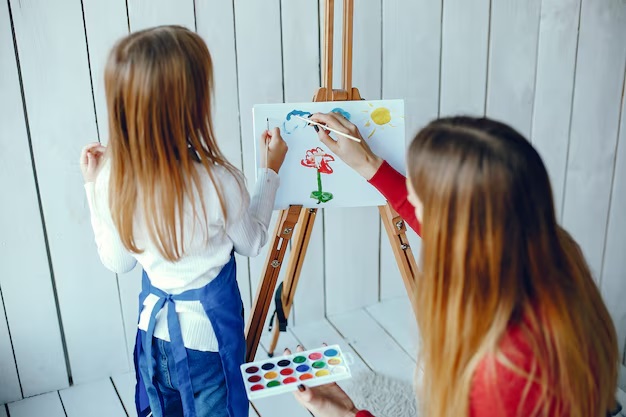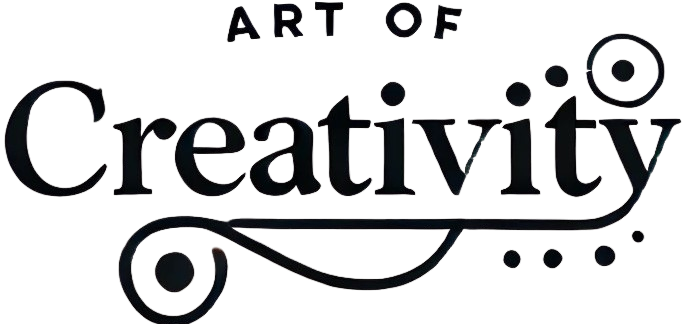Why Children’s Art Lessons should be an Indispensable Part of Their Development?

It is no secret that people, in general, love art and craft. Even if they can’t do it themselves; they’ll see or pay someone doing it. Kid art lessons are essential and lovely part of our kids lives, and everything lovely is important whether you agree or not. Art develops your conscience.
Dr Amrita Vohra, an Educationist, wrote in a column for The Hindu that:
“Learning the arts and crafts doesn’t just foster the creative development of a child, but also assists in advancing and refining his or her core skills, which in fact goes towards boosting academic achievement as well. Having extra-curricular clubs in which young artists can pursue their hobby can engage and augment a child’s cognitive and critical thinking abilities immensely. Cognition refers to the brain’s conscious mental activities, and includes thinking, reasoning, understanding, learning, and remembering. As such, the development of these functions is vital for all activities undertaken by a child.”
On the connection between arts and thinking, an article published by the Australian Journal of Teacher education reads:
“It has been well described that the processes involved in undertaking Arts activities involve critical thinking (Eisner, 1965, 1966, 2002) and that critical thinking requires the use of judgement (Ennis, 1962, 1985, 1991, 1996). To further understand the ‘faculty’ or ‘power of judgement’, Immanuel Kant’s influential theory describes it as having two roles, ‘determining’ and ‘reflecting’, which Kant further divides into ‘aesthetic’ and’ teleological’ judgment (cited in Ginsborg, 2005). Aesthetic judgment relies on the ability to discriminate at a sensory level and uses a combination of intellectual opinions, will, desire, preferences, values, subconscious behaviour, conscious decision, training and sociological institutions (Ginsborg, 2005). Teleological judgment is the practice of evaluating a decision against the criterion of whether the outcome achieves the original goal, characterised as “purposive or functional” (Ginsborg, 2005, p. 3).”
Here, we will discuss some essential qualities that a child develops while learning and practising any kind of art.
1) Problem-solving skills: When your children deploy their brains in making scenery or a painting, they take the help of their problem-solving skills.
For example: while drawing a mountain, a grass field and the Sun between the mountains; a child analyzes the depth of field so that the mountain looks far away and the grass looks closer to the seer.
The color of the Sun and depicts whether it is dusk or dawn. This is very generic yet it requires a lot of skills that will go unnoticed to the seer.
2) Confidence: When the child receives compliments for the art form he/she displays, a storm of confidence and happiness fills inside his/her heart. This confidence helps children to succeed throughout as they can believe in themselves.
3) Connections and Collaborations: Almost every art form requires meeting with people practising the same art form or the other. This helps the child to know people, socialise with them and create connections. The internet is filled with artist collaborating across nations. This has only happened because of art.
4) Language development: If you simply talk to your children regarding art, you can develop their vocabulary and learning skills. For example: If a child draws a plant; he/she can instantly learn new words like stem, leaves, flowers, buds, green, brown, tall, short, fruit, seeds etc. Similarly, every art form has its glossary which the pupil start learning from day one.
5) Improved Academic performance: David e.Gullatt writes in the Educational Forum that:
“..prominent theorists and practitioners such as Catterall (1998) and Gardner (1999) argued that arts are integral to the education of the whole child. These noted theorists recognized the lifelong benefits that the arts have to offer students. Gardner (1999, 30) proposed that all students have intelligence which registers in eight categories, though with varying degrees of proficiency:
• linguistic (words and language);
• logical-mathematical (numbers and reasoning);
• spatial (pictures);
• bodily-kinesthetic (the body);
• musical (notes and rhythm);
• interpersonal (people);
• intrapersonal (the self); and
• naturalist (nature).”
To conclude, if you need more proof, just try and teach your children an art form that they love.

